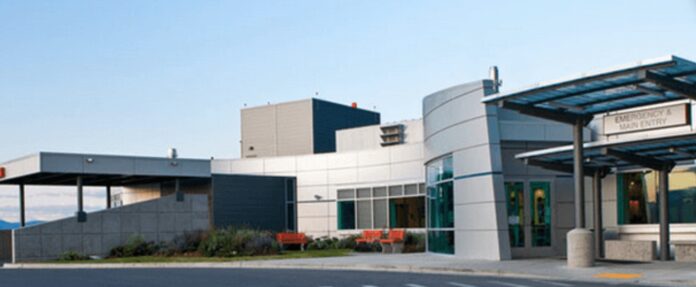By PEDRO GONZALEZ
In October, voters struck down a $38.5 million bond proposition for South Peninsula Hospital. It was not even close: 64% cast their ballots in opposition. The Peninsula Clarion called it “the biggest surprise” of the borough elections this year.
It would not have been such a shock if people had listened carefully to what service area residents had to say before they rejected it in a landslide. Sure, local officials had heard them during public hearings about the hospital bond. But did they listen? Voters clearly did not think so.
Behind the opposition to the hospital bond was a sense that those in charge of the decision-making process did not sufficiently address the concerns of residents or were even indifferent to them. That matters because the sentiment that drove voters to reject the proposition will almost certainly flow into other policy items.
“Does the hospital need to own more real estate? That question was on the ballot, and I think the community said, ‘No, I don’t think you do,” Chris Story told me. Story is a Homer resident and real estate investor. He also hosts a popular podcast called On Top of the World Radio, which he used to extensively cover the hospital bond.
Story said that little about the proposal made sense to him as a real estate veteran. In particular, the planned $13 million property acquisition gave him pause.
“They had just earlier in this calendar year signed a lease with one of the properties that was to be acquired through this bond,” Story said. “And then they used—‘they’ being the Kenai Peninsula Borough—they used that very lease with a very uncommon methodology of appraisal practice to create an artificially enlarged value just to meet the expectation of a seller,” he claimed.
It’s worth noting that Mayor Peter Micciche suggested that this component of the proposal was a key factor in its failure. “I think if it wasn’t for the property acquisition, the bond likely would have passed,” Micciche said in an interview with KBBI radio, adding that it left him “disappointed.”
Micciche and Story fell on different sides of the issue, but they seemed to agree here. Story explained the opposition’s rationale in this way: “We are not going to spend $13 million liened against our personal properties in the form of a bond so you could motivate an unmotivated seller.”
The hospitals financials also came under scrutiny during the debate.
According to publicly available records, its total assets grew by $10 million in the six years from 2011 to 2016 but by $44.5 million in the seven years since—or 400 percent more growth. Over these 13 years, the hospital, which serves a population of roughly 10,000 people, has reported accumulated losses of $968 million.
It appears that the more its assets grow, the more money it loses. In 2011, the hospital lost $38.2 million on assets of $59.8m. In 2018, it lost $79.7 million on assets of $83 million. And in 2023, it lost $113 million on assets of $114 million. That seems to show a history of an inverse relationship between assets and profitability. How is this deficit addressed? Most recent filings show only $107 million in “Program Service Revenue”, but a whopping $1.3 million in “Other Revenue” and “Investment Income”—that is, the taxpayer.
Story also said that many residents felt strongly that subsidizing the hospital expansion would hurt private practices in the area. “Where there’s a need, the marketplace will fill it, unless we have this artificial, unseen hand of this monopoly,” he added, referring to the hospital board.
However, some residents simply concluded that the pros outweighed the cons in the long run, like Mark Hemstreet, a grocery store manager.
Hemstreet said he wasn’t excited about the tax raise but believed the mill rate “might decrease a little bit so it might offset it, at least for a few years.” Hemstreet said that the impression he got from customers who spoke with him about the proposal is that some of them may have been more receptive to it if it had been broken into separate components. Certainly, that would have allowed for more debate and deliberation, which those who voted against protested there wasn’t enough of.
Hemstreet also made an interesting observation about how demographics could have played into the issue. He said older voters may have been more inclined to support the proposal over younger ones, who would be less inclined to see their property taxes go up in exchange for services they would be less likely to utilize. Census data puts the median age in Homer at roughly 40.
To be sure, Hemstreet didn’t mean that as a jab at any one particular group. It was an observation and one worth taking into account.
Still, it’s hard to explain the crushing defeat that occurred at the ballot box. Katie Ostrom did not cast a vote for or against the proposal, but she thinks that there is an “undersurface” of “resentment” and “anger” toward the hospital that factored into the outcome.
Ostrom is an obstetrician and gynecologist who has lived in Homer for over a decade. In 2018, she was elected chief of staff at the South Peninsula Hospital, where she oversaw OB-GYN services.
Ostrom recently parted ways with the hospital but still practices in the area.
“The way that I was treated and a number of us employees have been treated over the years has really left a bad taste in people’s mouths,” she said.
An institution’s reputation goes a long way toward building and maintaining trust with locals in a small town. Ostrom believes that the management of the South Peninsula Hospital hasn’t done a great job in that regard, and word gets around.
For policymakers looking at things from 3,000 feet, the minutiae of interpersonal dynamics might not seem a serious consideration. But then the import of that will inevitably reveal itself in how people vote, leaving the people scratching their heads. It’s a perennial problem, and it’s bigger than a hospital bond or even Alaska politics.
Pedro Gonzalez has joined the editorial staff of Must Read Alaska. His work has appeared in The New York Post, The Washington Examiner, and elsewhere.


Thanks for the in depth article. It is a bad hospital, and poorly run. Like your article points out, people know this.
I don’t trust any hospital anymore. Back when Obamacare was being pushed, that really opened my eyes to the evil in our healthcare system. No public hospitals should be trusted or supported at this pointed. Looking forward to the healthcare revamp under President Trump and his team.
Very true. SPH was full on mask and covid vax mandate. Un-vaxxed patients were treated like lepers. The CEO of SPH should have been fired long ago.
In Alaska, once upon a time there were community run hospitals, now there are hospital run communities.
The whole mega hospital complex hospital business model needs to be remodeled. Most of the country, including Alaska, suffers from chronic health issues. Hospitals are very good at treating acute emergencies and NOT very good at addressing chronic illnesses. Most hospitals are hemorrhaging money and are dependent on taxpayers to a large extent.